Comprehensive Assessment of Cannabidiol and HU308 in Acute and Chronic Colitis Models: Efficacy, Safety, and Mechanistic Innovations
Abstract
1. Introduction
2. Materials and Methods
2.1. Animal Care and Use
2.2. Dextran Sodium Sulphate Solution Preparation
2.3. Induction of Colitis
2.3.1. Acute Colitis
2.3.2. Chronic Colitis
2.4. Experimental Design and Pharmacological Treatments
2.4.1. Experimental Design
2.4.2. Pharmacological Treatments for Acute Colitis
2.4.3. Pharmacological Treatments for Chronic Colitis
2.5. Assessment of Colitis Clinical Markers
2.5.1. Disease Activity Index Score
2.5.2. Pain Behaviours
2.6. Random Blood Glucose
2.7. Euthanasia and Tissue Collection
2.7.1. Colon Length
2.7.2. Organ to Body Weight Percentage
2.7.3. Myeloperoxidase Activity
2.8. Determination of Pro-Inflammatory and Anti-Inflammatory Cytokines in Colon Tissues
2.9. Colon Histopathology
2.10. Plasma and Colon GLP-1 Measurement
2.11. Complete Blood Count and Plasma Biochemistry
2.12. Statistical Analysis
3. Results
3.1. Results of Acute Studies
3.1.1. Impact of CBD and HU308 Treatments on DSS-Induced Clinical Scores
CBD and HU308 Reduced DAI Scores
HU308 Maintained Healthy Body Weight
CBD and HU308 Reduced Diarrhoeal Scores
CBD and HU308 Reduced Faecal Blood Scores
CBD and HU308 Reduced Grimace Scores
3.1.2. Impact of CBD and HU308 Treatments on Colon Length, MPO Activity, Plasma GLP-1 Levels, and Spleen Metrics
CBD and HU308 Increased Colon Length
CBD and HU308 Reduced Colonic MPO Activity
CBD and HU308 Regulated Colon and Plasma GLP-1 Levels
CBD and HU308 Demonstrated a Beneficial Role in Spleen Metrics
CBD and HU308 Reduced MPO Activity in the Spleen
3.1.3. Inflammatory Cytokine Levels in DSS-Induced Colitis with CBD and HU308 Treatment
CBD and HU308 Reduced Interleukin-6 (IL-6)
CBD and HU308 Reduced Interleukin-1 Beta (IL-1β)
CBD and HU308 Had No Effect on Interleukin-10 (IL-10)
CBD and HU308 Reduced Monocyte Chemoattractant Protein-1 (MCP-1)
CBD and HU308 Reduced Tumour Necrosis Factor-Alpha (TNF-α)
3.1.4. Safety Profile of CBD and HU308
3.2. Results of Chronic Studies
3.2.1. Impact of HU308 Treatment on DSS-Induced Colitis Clinical Markers
HU308 Group Maintained Healthy Body Weight Throughout the Study
HU308 Reduced Diarrhoeal Scores
HU308 Reduced Faecal Blood Scores
HU308 Reduced DAI Scores
3.2.2. Impact of HU308 Treatments on Colon Length, MPO Activity, Plasma GLP-1 Levels, and Spleen Metrics in DSS-Induced Chronic Colitis
HU308 Increased Colon Length
HU308 Reduced MPO Activity in the Colon
HU308 Regulated Colonic and Plasma GLP-1 Levels
HU308 Reduced Relative Spleen Weight
HU308 Reduced MPO Activity in the Spleen
HU308 Normalized Colon Histopathological Score
3.2.3. HU308 Reduced Pro-Inflammatory Cytokine Levels in DSS-Induced Colitis
3.2.4. Impact of HU308 Treatment on Haematology and Liver and Kidney Function
4. Discussion
5. Conclusions
Author Contributions
Funding
Institutional Review Board Statement
Informed Consent Statement
Data Availability Statement
Acknowledgments
Conflicts of Interest
Abbreviations
References
- M’Koma, A.E. Inflammatory Bowel Disease: An Expanding Global Health Problem. Clin. Med. Insights Gastroenterol. 2013, 6, 33–47. [Google Scholar] [CrossRef] [PubMed]
- Greuter, T.; Rieder, F.; Kucharzik, T.; Peyrin-Biroulet, L.; Schoepfer, A.M.; Rubin, D.T.; Vavricka, S.R. Emerging Treatment Options for Extraintestinal Manifestations in IBD. Gut 2021, 70, 796–802. [Google Scholar] [CrossRef]
- Rogler, G.; Singh, A.; Kavanaugh, A.; Rubin, D.T. Extraintestinal Manifestations of Inflammatory Bowel Disease: Current Concepts, Treatment, and Implications for Disease Management. Gastroenterology 2021, 161, 1118–1132. [Google Scholar] [CrossRef]
- Cai, Z.; Wang, S.; Li, J. Treatment of Inflammatory Bowel Disease: A Comprehensive Review. Front. Med. 2021, 8, 765474. [Google Scholar] [CrossRef] [PubMed]
- Al-Bawardy, B.; Shivashankar, R.; Proctor, D.D. Novel and Emerging Therapies for Inflammatory Bowel Disease. Front. Pharmacol. 2021, 12, 651415. [Google Scholar] [CrossRef]
- Santiago, P.; Braga-Neto, M.B.; Loftus, E.V. Novel Therapies for Patients with Inflammatory Bowel Disease. Gastroenterol. Hepatol. 2022, 18, 453–465. [Google Scholar]
- Thapa, D.; Cairns, E.A.; Szczesniak, A.M.; Toguri, J.T.; Caldwell, M.D.; Kelly, M.E.M. The Cannabinoids Delta(8)THC, CBD, and HU-308 Act via Distinct Receptors to Reduce Corneal Pain and Inflammation. Cannabis Cannabinoid Res. 2018, 3, 11–20. [Google Scholar] [CrossRef] [PubMed]
- Thapa, D.; Cairns, E.A.; Szczesniak, A.-M.; Kulkarni, P.M.; Straiker, A.J.; Thakur, G.A.; Kelly, M.E.M. Allosteric Cannabinoid Receptor 1 (CB1) Ligands Reduce Ocular Pain and Inflammation. Molecules 2020, 25, 417. [Google Scholar] [CrossRef]
- Thapa, D.; Warne, L.N.; Falasca, M. Pharmacohistory of Cannabis Use-A New Possibility in Future Drug Development for Gastrointestinal Diseases. Int. J. Mol. Sci. 2023, 24, 14677. [Google Scholar] [CrossRef]
- Esposito, G.; Filippis, D.D.; Cirillo, C.; Iuvone, T.; Capoccia, E.; Scuderi, C.; Steardo, A.; Cuomo, R.; Steardo, L. Cannabidiol in Inflammatory Bowel Diseases: A Brief Overview: CBD AND IBD. Phytother. Res. 2013, 27, 633–636. [Google Scholar] [CrossRef]
- Lehmann, C.; Fisher, N.B.; Tugwell, B.; Szczesniak, A.; Kelly, M.; Zhou, J. Experimental Cannabidiol Treatment Reduces Early Pancreatic Inflammation in Type 1 Diabetes. Clin. Hemorheol. Microcirc. 2017, 64, 655–662. [Google Scholar] [CrossRef] [PubMed]
- Castillo-Arellano, J.; Canseco-Alba, A.; Cutler, S.J.; León, F. The Polypharmacological Effects of Cannabidiol. Molecules 2023, 28, 3271. [Google Scholar] [CrossRef] [PubMed]
- Lian, J.; Casari, I.; Falasca, M. Modulatory Role of the Endocannabinoidome in the Pathophysiology of the Gastrointestinal Tract. Pharmacol. Res. 2022, 175, 106025. [Google Scholar] [CrossRef] [PubMed]
- Strisciuglio, C.; Creoli, M.; Tortora, C.; Martinelli, M.; Miele, E.; Paino, S.; Luongo, L.; Rossi, F. Increased Expression of CB2 Receptor in the Intestinal Biopsies of Children with Inflammatory Bowel Disease. Pediatr. Res. 2023, 93, 520–525. [Google Scholar] [CrossRef] [PubMed]
- Marquéz, L.; Suárez, J.; Iglesias, M.; Bermudez-Silva, F.J.; Rodríguez de Fonseca, F.; Andreu, M. Ulcerative Colitis Induces Changes on the Expression of the Endocannabinoid System in the Human Colonic Tissue. PLoS ONE 2009, 4, e6893. [Google Scholar] [CrossRef]
- Britch, S.C.; Babalonis, S.; Walsh, S.L. Cannabidiol: Pharmacology and Therapeutic Targets. Psychopharmacology 2021, 238, 9–28. [Google Scholar] [CrossRef]
- Hanus, L.; Breuer, A.; Tchilibon, S.; Shiloah, S.; Goldenberg, D.; Horowitz, M.; Pertwee, R.G.; Ross, R.A.; Mechoulam, R.; Fride, E. HU-308: A Specific Agonist for CB(2), a Peripheral Cannabinoid Receptor. Proc. Natl. Acad. Sci. USA 1999, 96, 14228–14233. [Google Scholar] [CrossRef]
- Mechoulam, R. Looking Back at Cannabis Research. Curr. Pharm. Des. 2000, 6, 1313–1322. [Google Scholar] [CrossRef]
- Szczesniak, A.-M.; Porter, R.F.; Toguri, J.T.; Borowska-Fielding, J.; Gebremeskel, S.; Siwakoti, A.; Johnston, B.; Lehmann, C.; Kelly, M.E.M. Cannabinoid 2 Receptor Is a Novel Anti-Inflammatory Target in Experimental Proliferative Vitreoretinopathy. Neuropharmacology 2017, 113 Pt B, 627–638. [Google Scholar] [CrossRef]
- Hall, S.; Faridi, S.; Trivedi, P.; Sultana, S.; Ray, B.; Myers, T.; Euodia, I.; Vlatten, D.; Castonguay, M.; Zhou, J.; et al. Selective CB2 Receptor Agonist, HU-308, Reduces Systemic Inflammation in Endotoxin Model of Pneumonia-Induced Acute Lung Injury. Int. J. Mol. Sci. 2022, 23, 15857. [Google Scholar] [CrossRef]
- Berger, G.; Arora, N.; Burkovskiy, I.; Xia, Y.; Chinnadurai, A.; Westhofen, R.; Hagn, G.; Cox, A.; Kelly, M.; Zhou, J.; et al. Experimental Cannabinoid 2 Receptor Activation by Phyto-Derived and Synthetic Cannabinoid Ligands in LPS-Induced Interstitial Cystitis in Mice. Molecules 2019, 24, 4239. [Google Scholar] [CrossRef]
- Hoffmann, M.; Schwertassek, U.; Seydel, A.; Weber, K.; Falk, W.; Hauschildt, S.; Lehmann, J. A Refined and Translationally Relevant Model of Chronic DSS Colitis in BALB/c Mice. Lab. Anim. 2018, 52, 240–252. [Google Scholar] [CrossRef] [PubMed]
- Langford, D.J.; Bailey, A.L.; Chanda, M.L.; Clarke, S.E.; Drummond, T.E.; Echols, S.; Glick, S.; Ingrao, J.; Klassen-Ross, T.; LaCroix-Fralish, M.L.; et al. Coding of Facial Expressions of Pain in the Laboratory Mouse. Nat. Methods 2010, 7, 447–449. [Google Scholar] [CrossRef]
- Heylen, M.; Deleye, S.; De Man, J.G.; Ruyssers, N.E.; Vermeulen, W.; Stroobants, S.; Pelckmans, P.A.; Moreels, T.G.; Staelens, S.; De Winter, B.Y. Colonoscopy and µPET/CT Are Valid Techniques to Monitor Inflammation in the Adoptive Transfer Colitis Model in Mice. Inflamm. Bowel Dis. 2013, 19, 967–976. [Google Scholar] [CrossRef]
- Krohn, R.M.; Parsons, S.A.; Fichna, J.; Patel, K.D.; Yates, R.M.; Sharkey, K.A.; Storr, M.A. Abnormal Cannabidiol Attenuates Experimental Colitis in Mice, Promotes Wound Healing and Inhibits Neutrophil Recruitment. J. Inflamm. 2016, 13, 21. [Google Scholar] [CrossRef]
- Ruyssers, N.E.; De Winter, B.Y.; De Man, J.G.; Loukas, A.; Pearson, M.S.; Weinstock, J.V.; Van Den Bossche, R.M.; Martinet, W.; Pelckmans, P.A.; Moreels, T.G. Therapeutic Potential of Helminth Soluble Proteins in TNBS-Induced Colitis in Mice. Inflamm. Bowel Dis. 2009, 15, 491–500. [Google Scholar] [CrossRef]
- Erben, U.; Loddenkemper, C.; Doerfel, K.; Spieckermann, S.; Haller, D.; Heimesaat, M.M.; Zeitz, M.; Siegmund, B.; Kühl, A.A. A Guide to Histomorphological Evaluation of Intestinal Inflammation in Mouse Models. Int. J. Clin. Exp. Pathol. 2014, 7, 4557–4576. [Google Scholar]
- Koelink, P.J.; Wildenberg, M.E.; Stitt, L.W.; Feagan, B.G.; Koldijk, M.; Van ‘T Wout, A.B.; Atreya, R.; Vieth, M.; Brandse, J.F.; Duijst, S.; et al. Development of Reliable, Valid and Responsive Scoring Systems for Endoscopy and Histology in Animal Models for Inflammatory Bowel Disease. J. Crohn’s Colitis 2018, 12, 794–803. [Google Scholar] [CrossRef] [PubMed]
- Laroui, H.; Ingersoll, S.A.; Liu, H.C.; Baker, M.T.; Ayyadurai, S.; Charania, M.A.; Laroui, F.; Yan, Y.; Sitaraman, S.V.; Merlin, D. Dextran Sodium Sulfate (DSS) Induces Colitis in Mice by Forming Nano-Lipocomplexes with Medium-Chain-Length Fatty Acids in the Colon. PLoS ONE 2012, 7, e32084. [Google Scholar] [CrossRef]
- Wirtz, S.; Popp, V.; Kindermann, M.; Gerlach, K.; Weigmann, B.; Fichtner-Feigl, S.; Neurath, M.F. Chemically Induced Mouse Models of Acute and Chronic Intestinal Inflammation. Nat. Protoc. 2017, 12, 1295–1309. [Google Scholar] [CrossRef] [PubMed]
- Lee, Y.-S.; Jun, H.-S. Anti-Inflammatory Effects of GLP-1-Based Therapies beyond Glucose Control. Mediat. Inflamm. 2016, 2016, 3094642. [Google Scholar] [CrossRef] [PubMed]
- Gecse, K.B.; Vermeire, S. Differential Diagnosis of Inflammatory Bowel Disease: Imitations and Complications. Lancet Gastroenterol. Hepatol. 2018, 3, 644–653. [Google Scholar] [CrossRef]
- Lebrun, L.J.; Lenaerts, K.; Kiers, D.; Pais De Barros, J.-P.; Le Guern, N.; Plesnik, J.; Thomas, C.; Bourgeois, T.; Dejong, C.H.C.; Kox, M.; et al. Enteroendocrine L Cells Sense LPS after Gut Barrier Injury to Enhance GLP-1 Secretion. Cell Rep. 2017, 21, 1160–1168. [Google Scholar] [CrossRef] [PubMed]
- Zatorski, H.; Sałaga, M.; Fichna, J. Role of Glucagon-like Peptides in Inflammatory Bowel Diseases—Current Knowledge and Future Perspectives. Naunyn-Schmiedeberg’s Arch. Pharmacol. 2019, 392, 1321–1330. [Google Scholar] [CrossRef] [PubMed]
- Mehdi, S.F.; Pusapati, S.; Anwar, M.S.; Lohana, D.; Kumar, P.; Nandula, S.A.; Nawaz, F.K.; Tracey, K.; Yang, H.; LeRoith, D.; et al. Glucagon-like Peptide-1: A Multi-Faceted Anti-Inflammatory Agent. Front. Immunol. 2023, 14, 1148209. [Google Scholar] [CrossRef]
- Wang, W.; Zhang, C.; Zhang, H.; Li, L.; Fan, T.; Jin, Z. The Alleviating Effect and Mechanism of GLP-1 on Ulcerative Colitis. Aging 2023, 15, 8044–8060. [Google Scholar] [CrossRef]
- Alharbi, S.H. Anti-Inflammatory Role of Glucagon-like Peptide 1 Receptor Agonists and Its Clinical Implications. Ther. Adv. Endocrinol. 2024, 15, 20420188231222367. [Google Scholar] [CrossRef]
- Wong, C.K.; McLean, B.A.; Baggio, L.L.; Koehler, J.A.; Hammoud, R.; Rittig, N.; Yabut, J.M.; Seeley, R.J.; Brown, T.J.; Drucker, D.J. Central Glucagon-like Peptide 1 Receptor Activation Inhibits Toll-like Receptor Agonist-Induced Inflammation. Cell Metab. 2024, 36, 130–143.e5. [Google Scholar] [CrossRef]
- Biagioli, M.; Marchianò, S.; Roselli, R.; Di Giorgio, C.; Bellini, R.; Bordoni, M.; Distrutti, E.; Catalanotti, B.; Zampella, A.; Graziosi, L.; et al. GLP-1 Mediates Regulation of Colonic ACE2 Expression by the Bile Acid Receptor GPBAR1 in Inflammation. Cells 2022, 11, 1187. [Google Scholar] [CrossRef]
- Sanchez-Muñoz, F.; Dominguez-Lopez, A.; Yamamoto-Furusho, J.K. Role of Cytokines in Inflammatory Bowel Disease. WJG 2008, 14, 4280. [Google Scholar] [CrossRef]
- Kim, J.J.; Shajib, M.S.; Manocha, M.M.; Khan, W.I. Investigating Intestinal Inflammation in DSS-Induced Model of IBD. JoVE 2012, 60, 3678. [Google Scholar] [CrossRef]
- Ke, P.; Shao, B.-Z.; Xu, Z.-Q.; Wei, W.; Han, B.-Z.; Chen, X.-W.; Su, D.-F.; Liu, C. Activation of Cannabinoid Receptor 2 Ameliorates DSS-Induced Colitis through Inhibiting NLRP3 Inflammasome in Macrophages. PLoS ONE 2016, 11, e0155076. [Google Scholar] [CrossRef]
- Ahmed, W.; Katz, S. Therapeutic Use of Cannabis in Inflammatory Bowel Disease. Gastroenterol. Hepatol. 2016, 12, 668–679. [Google Scholar]
- Magyari, L. Interleukin and Interleukin Receptor Gene Polymorphisms in Inflammatory Bowel Diseases Susceptibility. WJG 2014, 20, 3208. [Google Scholar] [CrossRef]
- Seiderer, J.; Elben, I.; Diegelmann, J.; Glas, J.; Stallhofer, J.; Tillack, C.; Pfennig, S.; Jürgens, M.; Schmechel, S.; Konrad, A.; et al. Role of the Novel Th17 Cytokine IL-17F in Inflammatory Bowel Disease (IBD): Upregulated Colonic IL-17F Expression in Active Crohnʼs Disease and Analysis of the IL17F p.His161Arg Polymorphism in IBD. Inflamm. Bowel Dis. 2008, 14, 437–445. [Google Scholar] [CrossRef]
- Toguri, J.T.; Lehmann, C.; Laprairie, R.B.; Szczesniak, A.M.; Zhou, J.; Denovan-Wright, E.M.; Kelly, M.E. Anti-Inflammatory Effects of Cannabinoid CB(2) Receptor Activation in Endotoxin-Induced Uveitis. Br. J. Pharmacol. 2014, 171, 1448–1461. [Google Scholar] [CrossRef]
- Toguri, J.T.; Moxsom, R.; Szczesniak, A.M.; Zhou, J.; Kelly, M.E.; Lehmann, C. Cannabinoid 2 Receptor Activation Reduces Leukocyte Adhesion and Improves Capillary Perfusion in the Iridial Microvasculature during Systemic Inflammation. Clin. Hemorheol. Microcirc. 2015, 61, 237–249. [Google Scholar] [CrossRef] [PubMed]
- Zhao, F.-Z.; Gu, W.-J.; Li, L.-Z.; Qu, Z.-K.; Xu, M.-Y.; Liu, K.; Zhang, F.; Liu, H.; Xu, J.; Yin, H.-Y. Cannabinoid Receptor 2 Alleviates Sepsis-Associated Acute Lung Injury by Modulating Maturation of Dendritic Cells. Int. Immunopharmacol. 2023, 123, 110771. [Google Scholar] [CrossRef] [PubMed]
- Wu, A.; Hu, P.; Lin, J.; Xia, W.; Zhang, R. Activating Cannabinoid Receptor 2 Protects Against Diabetic Cardiomyopathy Through Autophagy Induction. Front. Pharmacol. 2018, 9, 1292. [Google Scholar] [CrossRef] [PubMed]
- Rajesh, M.; Pan, H.; Mukhopadhyay, P.; Bátkai, S.; Osei-Hyiaman, D.; Haskó, G.; Liaudet, L.; Gao, B.; Pacher, P. Pivotal Advance: Cannabinoid-2 Receptor Agonist HU-308 Protects against Hepatic Ischemia/Reperfusion Injury by Attenuating Oxidative Stress, Inflammatory Response, and Apoptosis. J. Leukoc. Biol. 2007, 82, 1382–1389. [Google Scholar] [CrossRef]
- Mukhopadhyay, P.; Rajesh, M.; Horvath, B.; Batkai, S.; Park, O.; Tanchian, G.; Gao, R.Y.; Patel, V.; Wink, D.A.; Liaudet, L.; et al. Cannabidiol Protects against Hepatic Ischemia/Reperfusion Injury by Attenuating Inflammatory Signaling and Response, Oxidative/Nitrative Stress, and Cell Death. Free Radic. Biol. Med. 2011, 50, 1368–1381. [Google Scholar] [CrossRef]
- Anand, A.C.; Acharya, S.K. The Story of Ammonia in Liver Disease: An Unraveling Continuum. J. Clin. Exp. Hepatol. 2024, 14, 101361. [Google Scholar] [CrossRef]
- Duan, Y.; Wu, X.; Liang, S.; Jin, F. Elevated Blood Ammonia Level Is a Potential Biological Risk Factor of Behavioral Disorders in Prisoners. Behav. Neurol. 2015, 2015, 797862. [Google Scholar] [CrossRef] [PubMed]
- Jin, Y.Y.; Singh, P.; Chung, H.-J.; Hong, S.-T. Blood Ammonia as a Possible Etiological Agent for Alzheimer’s Disease. Nutrients 2018, 10, 564. [Google Scholar] [CrossRef] [PubMed]
- Adlimoghaddam, A.; Sabbir, M.G.; Albensi, B.C. Ammonia as a Potential Neurotoxic Factor in Alzheimer’s Disease. Front. Mol. Neurosci. 2016, 9, 57. [Google Scholar] [CrossRef] [PubMed]
- Chen, T.; Pan, F.; Huang, Q.; Xie, G.; Chao, X.; Wu, L.; Wang, J.; Cui, L.; Sun, T.; Li, M.; et al. Metabolic Phenotyping Reveals an Emerging Role of Ammonia Abnormality in Alzheimer’s Disease. Nat. Commun. 2024, 15, 3796. [Google Scholar] [CrossRef]
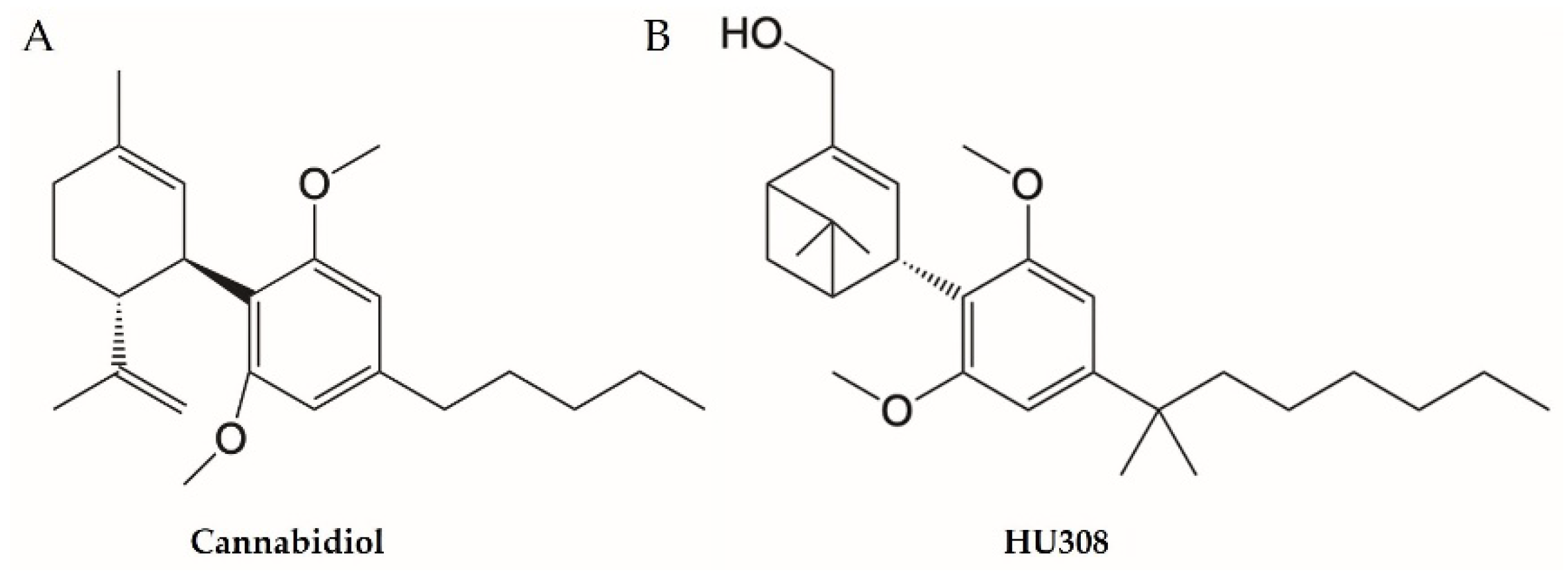
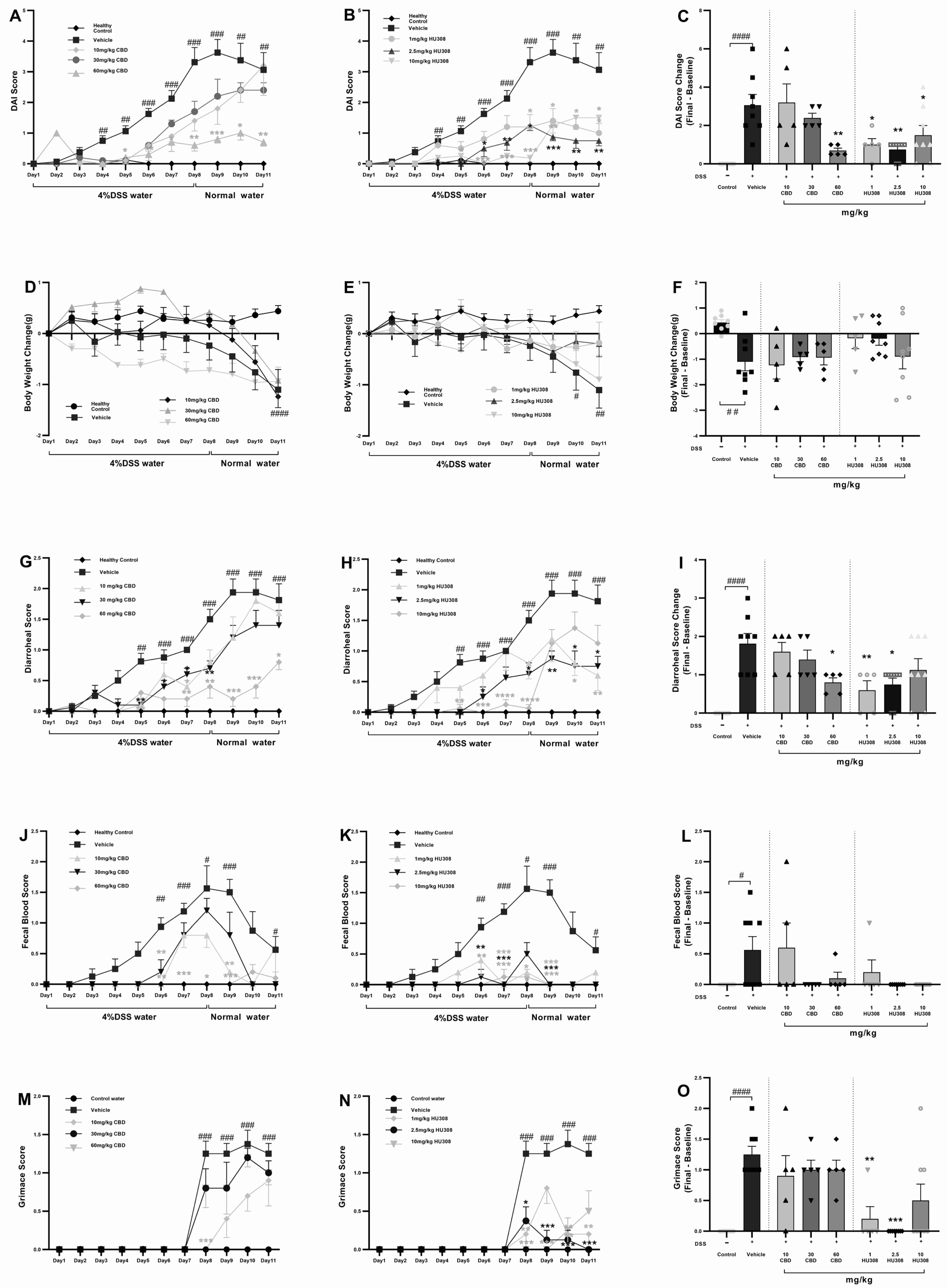
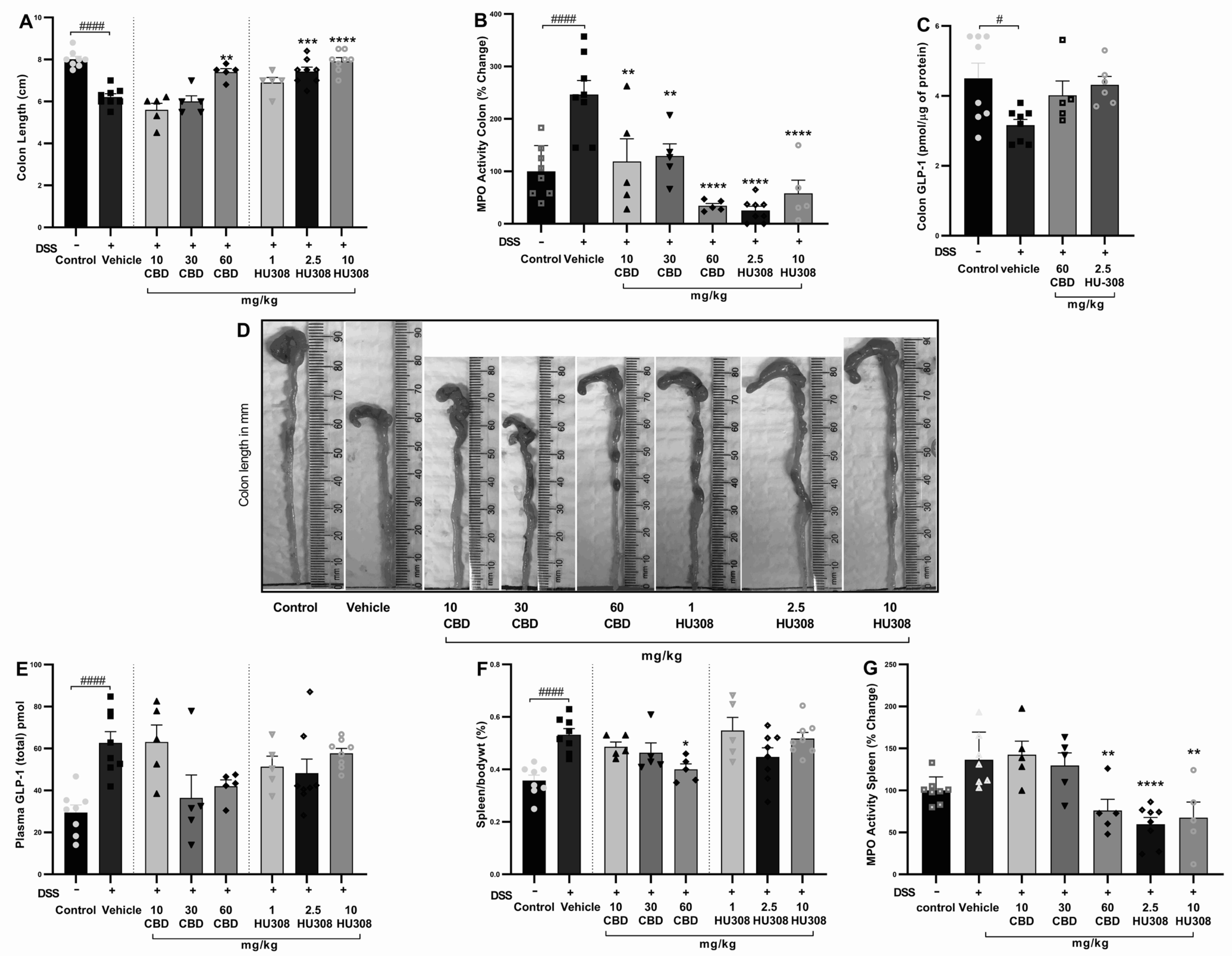
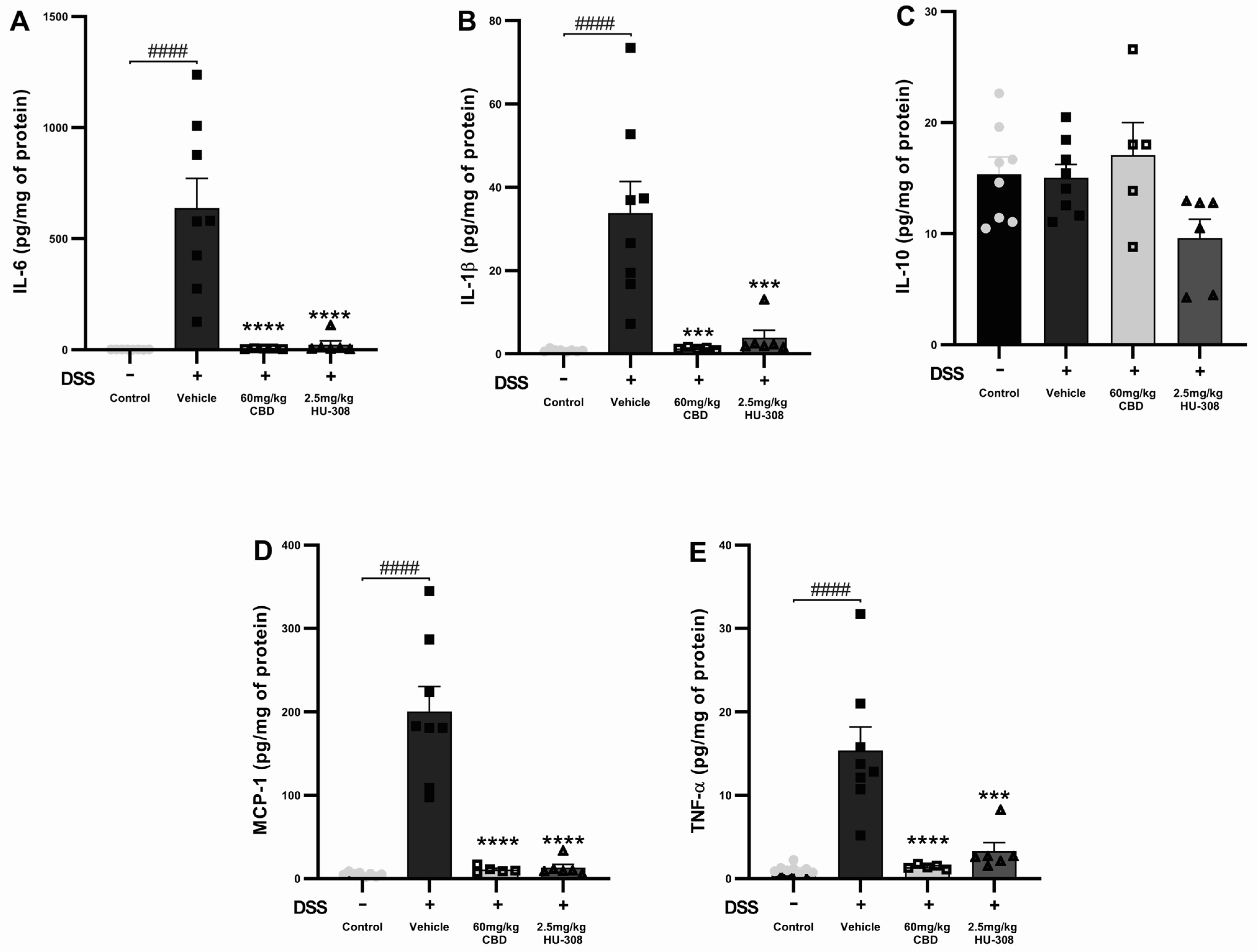
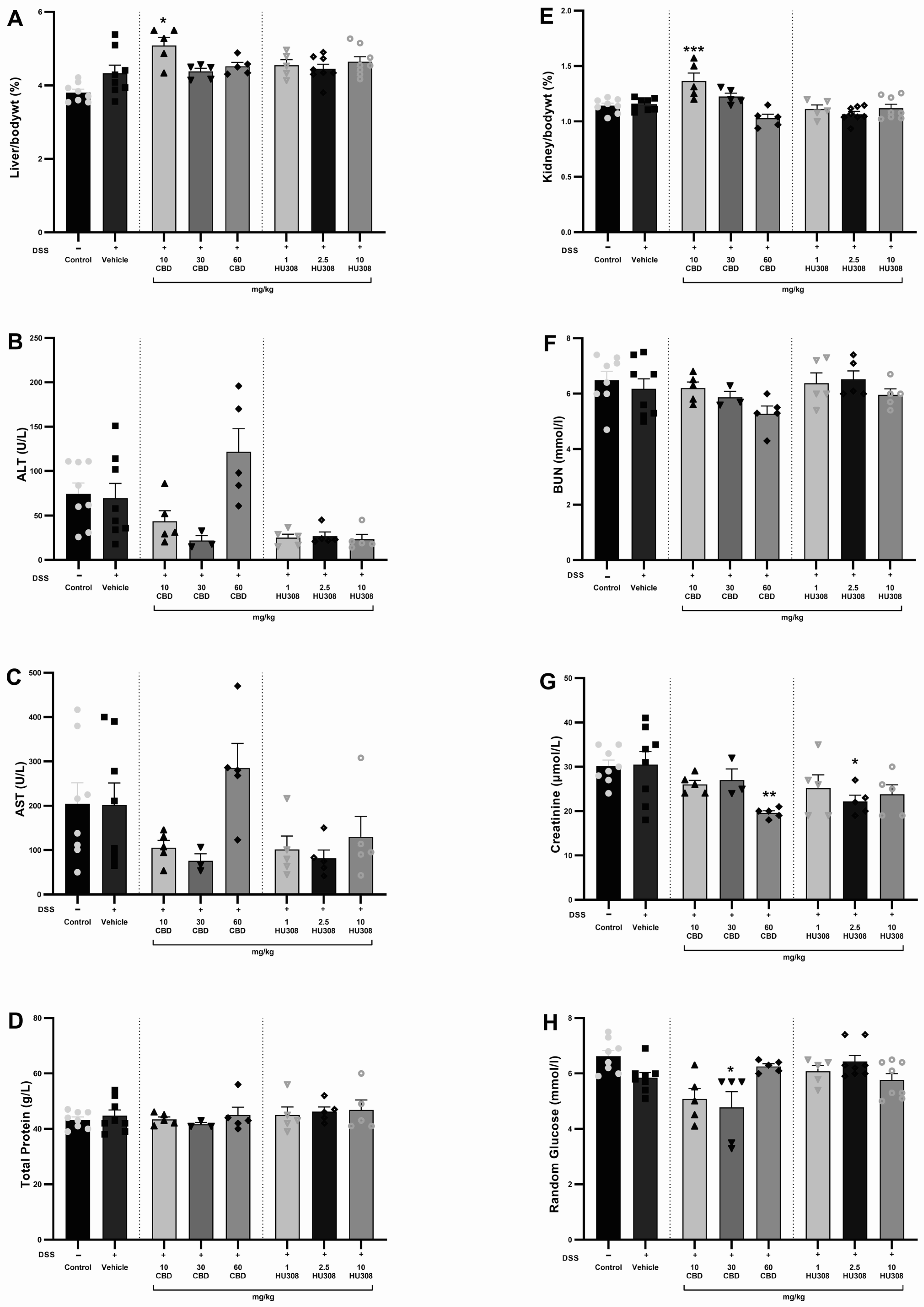
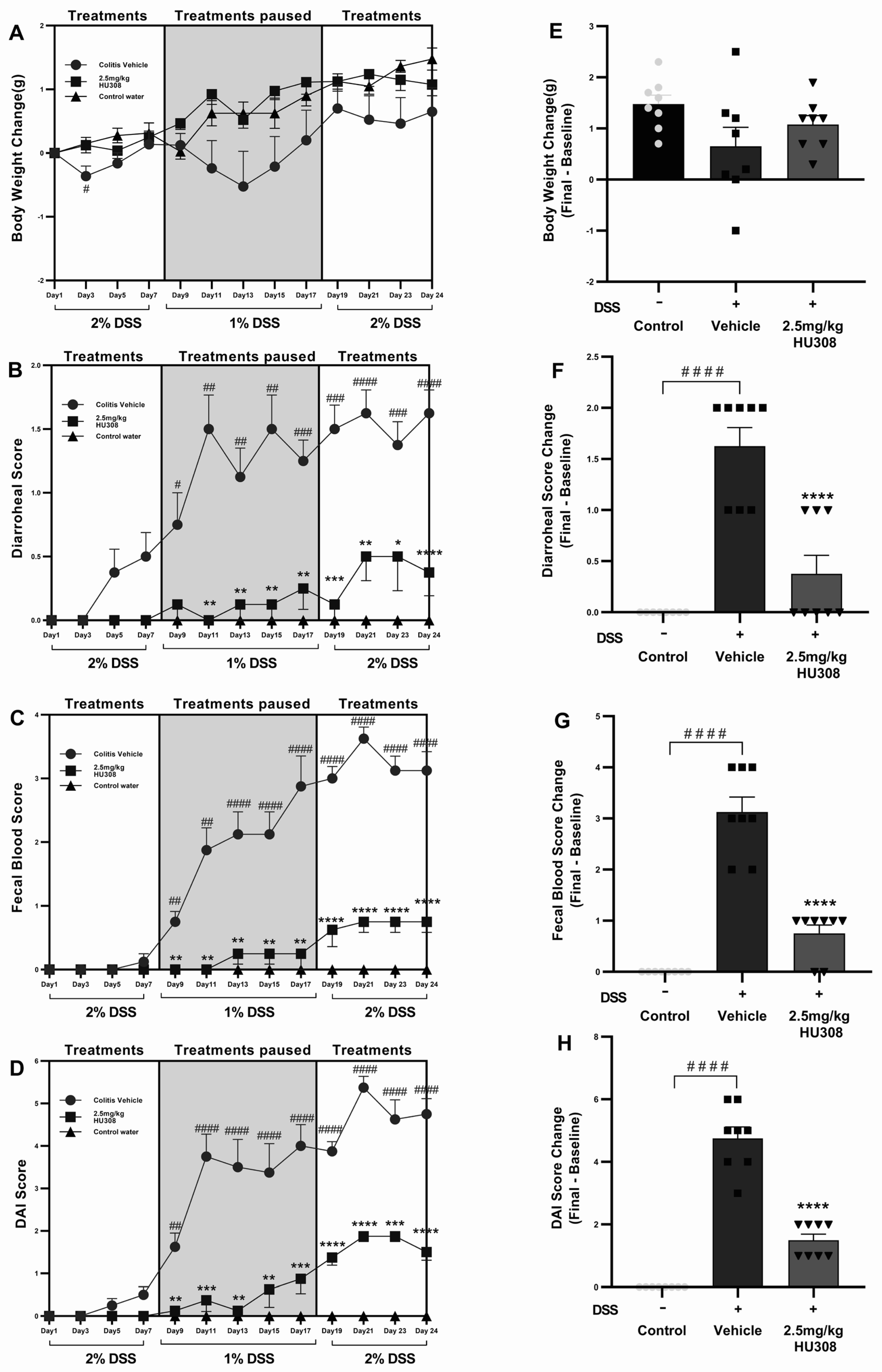
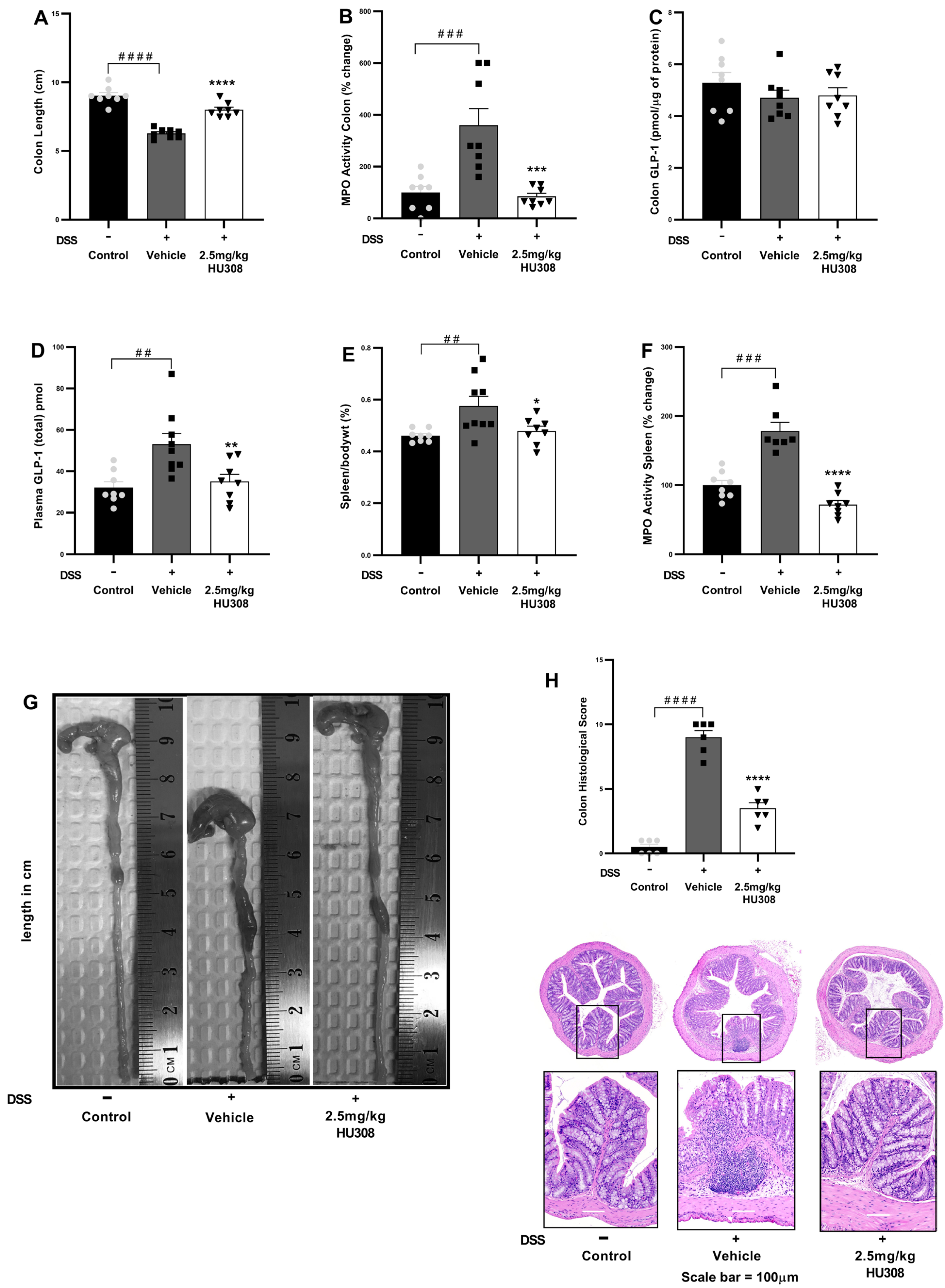
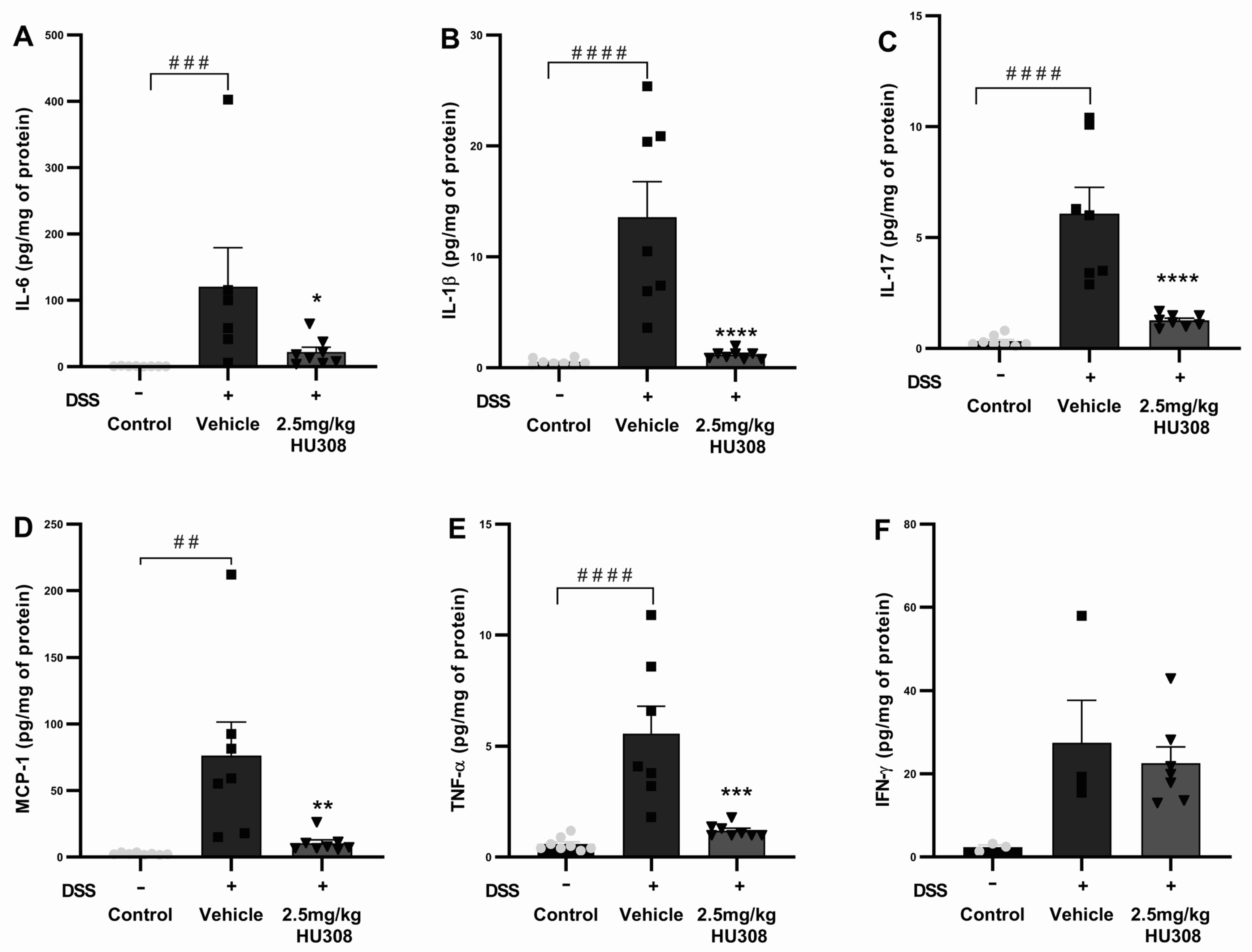
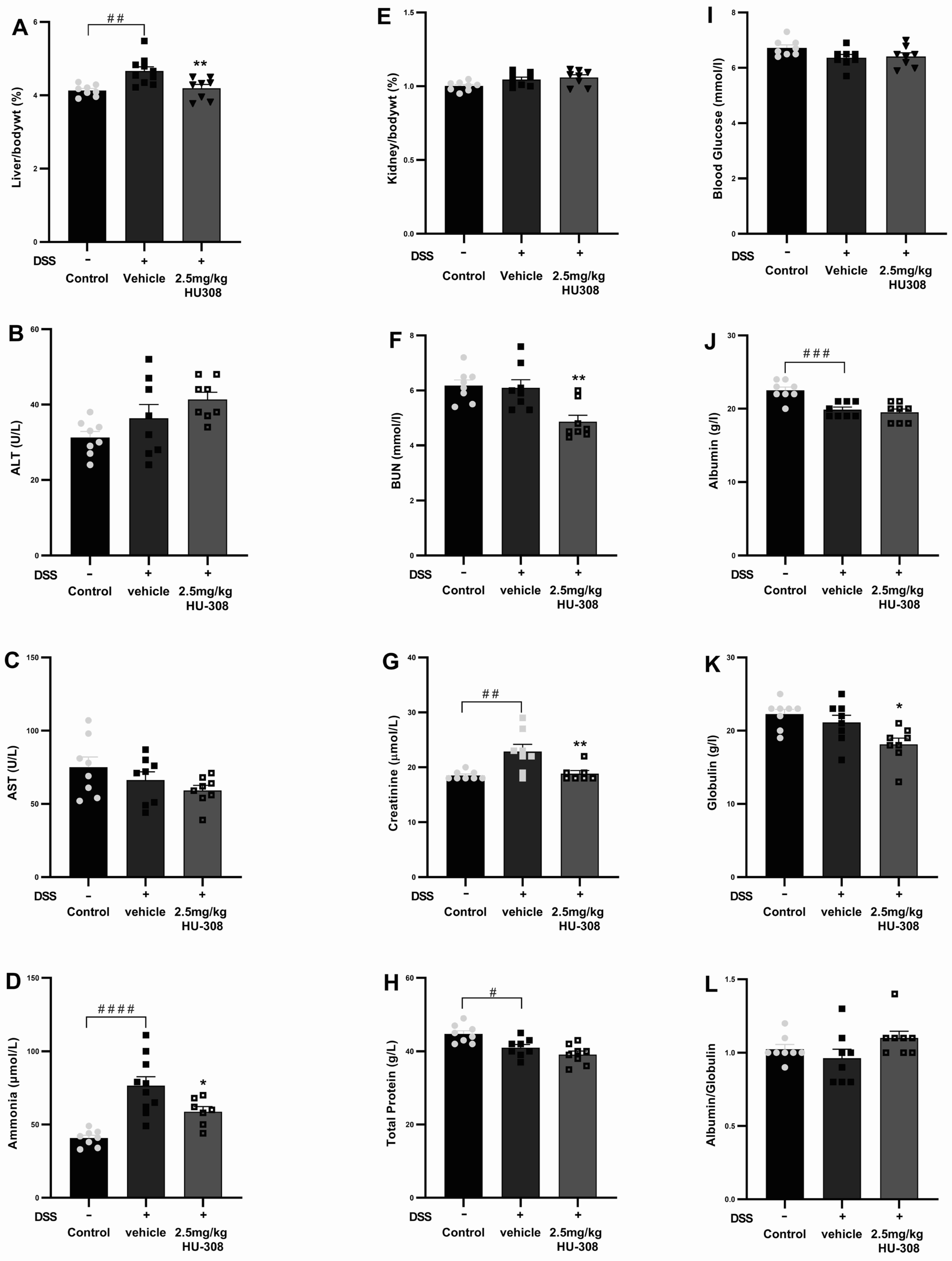
| Clinical Colitis Scores | 0 | 1 | 2 | 3 |
|---|---|---|---|---|
| Body weight loss score | <5% | 5–10% | 11–15% | 16–20% |
| Diarrhoeal score/stool consistency | Normal | Mild-soft, but still formed | Very soft/Sticky | Loose/diarrhoea |
| Faecal blood score/rectal bleeding | Normal colour stool/no rectal bleeding | Positive hemoccult—slight (brown colour)/slight blood spotting in the anus | Positive hemoccult—darker (reddish)/significant presence of blood in the anus | Visible trace of blood/rectal bleeding |
| Pain Features/Scores | 0 | 1 | 2 |
|---|---|---|---|
| Orbital tightening | Not present | Closing of eyelid, narrowing of orbital area | Complete closure of eye with tightened orbital |
| Nose bulge | Not present | Slight bulging on the bridge of nose | Completely bulged nose |
| Cheek bulge | Not present | Slight bulging of the cheek | Completely bulged |
| Ear position | Normal position | Ears moving towards the back | Folded ear forming a pointed shape |
| Whisker change | Normal whisker position | Whiskers pulled back/front | Clumping of whiskers |
| Movement/gait | Normal activity | Moves slowly | Moves only when provoked |
| Body position/hunching | Normal position | Slight tuck to abdomen | Fully hunched |
| Score | Severity of Inflammation | Crypt Damage | Goblet Cell Loss | Ulceration |
|---|---|---|---|---|
| 0 | Absent | intact crypts | absent | absent |
| 1 | Increased presence of inflammatory cells in lamina propria | Loss of the basal one-third | <10% | |
| 2 | Also infiltrates submucosa | Loss of the basal two-thirds | Decreased by 10–50% | |
| 3 | Transmural | Loss of entire crypt | Decreased by > 50% | Present |
| Treatment Groups | Healthy Control | Colitis Vehicle | 2.5 mg/kg HU308 | 10 mg/kg HU308 |
|---|---|---|---|---|
| WBC (109/L) | 6.2 ± 0.6 | 6.8 ± 2.0 | 4.0 ± 0.3 | 6.6 ± 1.1 |
| Lymphocytes (109/L) | 2.9 ± 1.2 | 5.2 ± 1.7 | 1.2 ± 1.1 | 5.2 ± 1.1 |
| Monocytes (109/L) | 0.1 ± 0.03 | 0.3 ± 0.1 | 0.1 ± 0.05 | 0.3 ± 0.03 |
| Granulocytes (109/L) | 3.2 ± 1.0 | 1.3 ± 0.3 | 2.6 ± 1.0 | 1.1 ± 0.1 |
| RBC (1012/L) | 9.2 ± 0.1 | 9.6 ± 0.2 | 9.4 ± 0.2 | 9.4 ± 0.2 |
| Haemoglobin (g/L) | 134.7 ± 2.3 | 135.4 ± 1.8 | 137.3 ± 4.3 | 135.38 ± 2.6 |
| Haematocrit (%) | 41.9 ± 0.6 | 43.4 ± 1.0 | 42.7 ± 1.0 | 42.6 ± 0.7 |
| Mean corpuscular volume (fL) | 45.6 ± 0.2 | 45.2 ± 0.3 | 45.3 ± 0.4 | 45.4 ± 0.1 |
| Mean corpuscular haemoglobin (pg) | 14.6 ± 0.1 | 14.5 ± 0.1 | 14.5 ± 0.2 | 14.4 ± 0.1 |
| Mean corpuscular haemoglobin concentration (g/L) | 320.8 ± 2.6 | 321.4 ± 2.4 | 321.0 ± 2.9 | 317.3 ± 1.5 |
| Red cell distribution width (%) | 11.8 ± 0.2 | 11.6 ± 0.3 | 11.8 ± 0.2 | 12.1 ± 0.1 |
| Platelets (109/L) | 1017.3 ± 65.1 | 917.4 ± 118.0 | 1054.0 ± 49 | 966.3 ± 17.2 |
| Mean platelet volume (fL) | 4.9 ± 0.02 | 5.2 ± 0.1 | 5.4 ± 0.3 | 5.2 ± 0.1 |
| Platelet distribution width | 16.3 ± 0.01 | 16.4 ± 0.1 | 16.6 ± 0.6 | 16.2 ± 0.1 |
| Procalcitonin (%) | 0.5 ± 0.01 | 0.5 ± 0.1 | 0.5 ± 0.02 | 0.5 ± 0.02 |
| Treatment Groups | Healthy Control | Colitis Control | 2.5 mg/kg HU308 |
|---|---|---|---|
| WBC (109/L) | 5.6 ± 0.8 | 6.8 ± 0.8 | 4.4 ± 0.4 * |
| Lymphocytes (109/L) | 2.5 ± 1.2 | 2.4 ± 1.1 | 0.1 ± 0.04 * |
| Monocytes (109/L) | 0.2 ± 0.04 | 0.2± 0.1 | 0.1 ± 0.02 |
| Granulocytes (109/L) | 3.0 ± 1.0 | 4.2 ± 1.1 | 4.2 ± 0.4 |
| RBC (1012/L) | 9.2 ± 0.1 | 8.9 ± 0.1 | 8.7 ± 0.2 |
| Haemoglobin (g/L) | 135.3 ± 2.2 | 131.3 ± 1.3 | 128.5 ± 2.7 |
| Haematocrit (%) | 42.3 ± 0.7 | 41.0 ± 0.3 | 39.8 ± 0.8 |
| Mean corpuscular volume (fL) | 45.8 ± 0.2 | 46.1 ± 0.3 | 45.8 ± 0.2 |
| Mean corpuscular haemoglobin (pg) | 14.6 ± 0.1 | 14.7 ± 0.1 | 14.7 ± 0.1 |
| Mean corpuscular haemoglobin concentration (g/L) | 319.3 ± 2.9 | 319.5 ± 2.4 | 322.8 ± 1.9 |
| Red cell distribution width (%) | 11.7 ± 0.2 | 12.3 ± 0.3 | 12.5 ± 0.3 |
| Platelets (109/L) | 1034.3 ± 62.2 | 980.0 ± 45.8 | 958.2 ± 26.6 |
| Mean platelet volume (fL) | 4.9 ± 0.04 | 4.9 ± 0.9 | 5.0 ± 0.07 |
| Platelet distribution width | 16.3 ± 0.05 | 16.1 ± 0.05 | 16.1 ± 0.06 |
Disclaimer/Publisher’s Note: The statements, opinions and data contained in all publications are solely those of the individual author(s) and contributor(s) and not of MDPI and/or the editor(s). MDPI and/or the editor(s) disclaim responsibility for any injury to people or property resulting from any ideas, methods, instructions or products referred to in the content. |
© 2024 by the authors. Licensee MDPI, Basel, Switzerland. This article is an open access article distributed under the terms and conditions of the Creative Commons Attribution (CC BY) license (https://creativecommons.org/licenses/by/4.0/).
Share and Cite
Thapa, D.; Patil, M.; Warne, L.N.; Carlessi, R.; Falasca, M. Comprehensive Assessment of Cannabidiol and HU308 in Acute and Chronic Colitis Models: Efficacy, Safety, and Mechanistic Innovations. Cells 2024, 13, 2013. https://doi.org/10.3390/cells13232013
Thapa D, Patil M, Warne LN, Carlessi R, Falasca M. Comprehensive Assessment of Cannabidiol and HU308 in Acute and Chronic Colitis Models: Efficacy, Safety, and Mechanistic Innovations. Cells. 2024; 13(23):2013. https://doi.org/10.3390/cells13232013
Chicago/Turabian StyleThapa, Dinesh, Mohan Patil, Leon N Warne, Rodrigo Carlessi, and Marco Falasca. 2024. "Comprehensive Assessment of Cannabidiol and HU308 in Acute and Chronic Colitis Models: Efficacy, Safety, and Mechanistic Innovations" Cells 13, no. 23: 2013. https://doi.org/10.3390/cells13232013
APA StyleThapa, D., Patil, M., Warne, L. N., Carlessi, R., & Falasca, M. (2024). Comprehensive Assessment of Cannabidiol and HU308 in Acute and Chronic Colitis Models: Efficacy, Safety, and Mechanistic Innovations. Cells, 13(23), 2013. https://doi.org/10.3390/cells13232013








